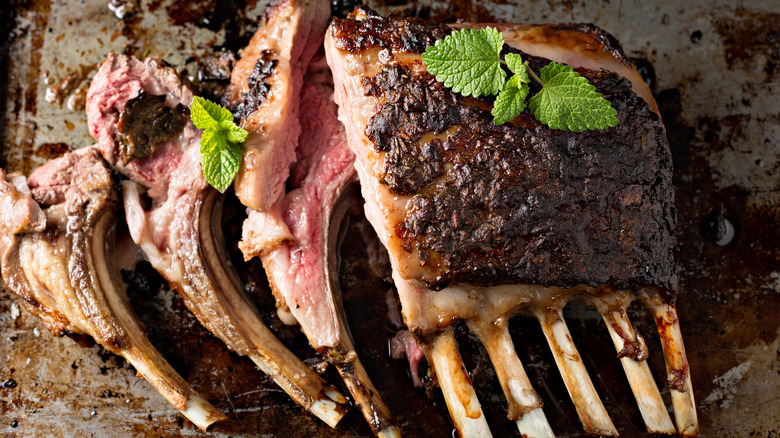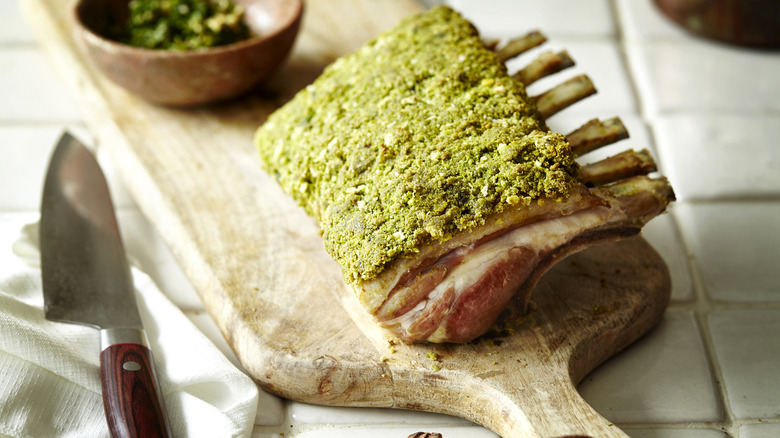The Best Oven Placement For Cooking A Rack Of Lamb
A rack of lamb might just be one of the most flavorful and indulgent dishes you can pull off at home for a special dinner party or holiday meal. Lamb's flavor is more unique compared to beef or chicken, and it comes with a higher price tag. To make the most of its flavor and decadence, there are tips like to coat lamb in Dijon mustard for juicy meat and flavorful crust — but all of that will likely go to waste if you don't place the dish in the right place in your oven.
"When cooking lamb, it's best to use the middle oven rack," says Wissam Baki, the executive chef at Amal Miami, a modern Lebanese restaurant. "This position ensures even heat distribution, allowing the lamb to cook thoroughly without burning or undercooking. If you're roasting a large cut like a rack of lamb, placing it in the middle helps achieve a consistent texture and color."
To follow Baki's guidance, move the rack directly to the center of your oven (if it's not already there). To ensure that the lamb is cooked evenly on both sides with a nice crust and tender center, try not to cook other dishes above or below the middle rack if possible.
Preheating, searing, and more chef-approved tips for cooking a rack of lamb in the oven
The placement in the oven is just one of the ways to ensure the rack of lamb cooks perfectly. "Always make sure to preheat your oven before cooking," Wissam Baki recommends. For reference, a temperature around 450 degrees Fahrenheit should be just right. Baki also suggests searing the meat while the oven preheats to "enhance flavor." Searing will also caramelize the seasonings on the outside to obtain a flavorful and crunchy crust. Cook according to recipe, but use a meat thermometer to check the internal temperature, which should be around 145 degrees Fahrenheit.
You'll need a recipe to try your new skills, so consider Tasting Table's mustard-crusted rack of lamb that's ready in just about 30 minutes. Another option is to cook this rack of lamb with hazelnut gremolata. And here's a final chef-approved tip to finish it off: "[It's] important to rest your meat after cooking to allow the juices to redistribute and ensure a juicy interior,'" Baki says.

